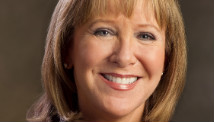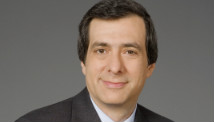LONDON (Reuters) - World shares staged a modest recovery from two days of losses on Wednesday after aluminum giant Alcoa opened the U.S. earnings season with an optimistic outlook for world demand.
However, with European and British central banks due to hold policy meetings on Thursday, the same day Spain will test demand for its debt and China releases its latest trade data, investors were in a cautious mood.
Alcoa, the largest aluminum producer in the United States, rose 1.3 percent in after-hours trade after it reported a fourth-quarter profit in line with Wall Street expectations and revenues that beat forecasts.
The results lifted Asian stock markets and pushed Europe's FTSE Eurofirst 300 index <.fteu3> up around 0.2 percent in early trade, leaving the MSCI world equity index <.miwd00000pus> up 0.1 percent. London's FTSE 100 <.ftse>, Paris's CAC-40 <.fchi> and Frankfurt's DAX <.gdaxi> were flat to 0.2 percent higher.
U.S. stock futures were up 0.15 percent, suggesting a firmer start on Wall Street. <.l><.eu><.n/>
Corporate profits are expected to be higher than the third quarter's lackluster results, but analysts' estimates are down sharply from where they were in October.
"Expectations are quite low going into the earnings season as we saw a lot of downward guidance in the past few months. There is potential for an upside surprise to come through," said Robert Parkes, equity strategist at HSBC Securities.
SOVEREIGN DEBT TEST
In European fixed income markets German Bund prices dipped slightly as investors prepared for the government's auction of 5 billion euros' worth of new five-year bonds following successful debt sales in Austria, the Netherlands and Ireland on Tuesday.
Investors were also looking ahead to Spanish and Italian bond auctions on Thursday for the new year's first test of market appetite for peripheral euro zone debt.
The Spanish auction could also provide clues on the timing of a much anticipated request by Madrid for fresh financial aid from the ECB. [ID:nL5E9C46KK]
The dollar meanwhile climbed against the yen, moving back towards a 2-1/2 year high hit last week, on expectations of a much bolder monetary easing from the Bank of Japan at its next meeting later this month.
The U.S. currency was up 0.7 percent at 87.61 yen, above a near one-week low of 86.82 hit earlier in Tokyo.
"No one is going to want to be short yen going into the BOJ meeting," said Derek Halpenny, European head of FX research at Bank of Tokyo-Mitsubishi.
Sources familiar with the BOJ's thinking told Reuters the central bank was likely to adopt a 2 percent inflation target at the meeting, double its current goal, and issue a statement with the government pledging to pursue bold monetary easing steps.
The BOJ will also consider easing monetary policy again this month, probably through a further increase in its 101 trillion yen ($1.2 trillion) asset buying and lending programme, the sources said.
The euro held steady against the dollar at $1.3080, with most analysts forecasting the European Central Bank will keep interest rates on hold on Thursday, though some believe rates will be cut later this year.
CHINA DEMAND EYED
Brent crude oil slipped around 0.3 percent to below $112 per barrel as the market awaited the latest trade data from China, the world's biggest energy consumer, due on Thursday.
"What we're seeing in the oil markets is the cautious sentiment playing up ahead of some key economic events this week," said Ker Chung Yang, senior investment analyst at Phillips Futures in Singapore.
However, iron ore jumped to its highest since October 2011, stretching a rally that has lifted prices by more than a third since December as China replenished stockpiles and as supply in the spot market remained limited.
Iron ore, a raw material used to make steel, has now risen 83 percent since falling to below $87 in September.
(Additional reporting by Nia Williams and Atul Prakash; Editing by Will Waterman)


